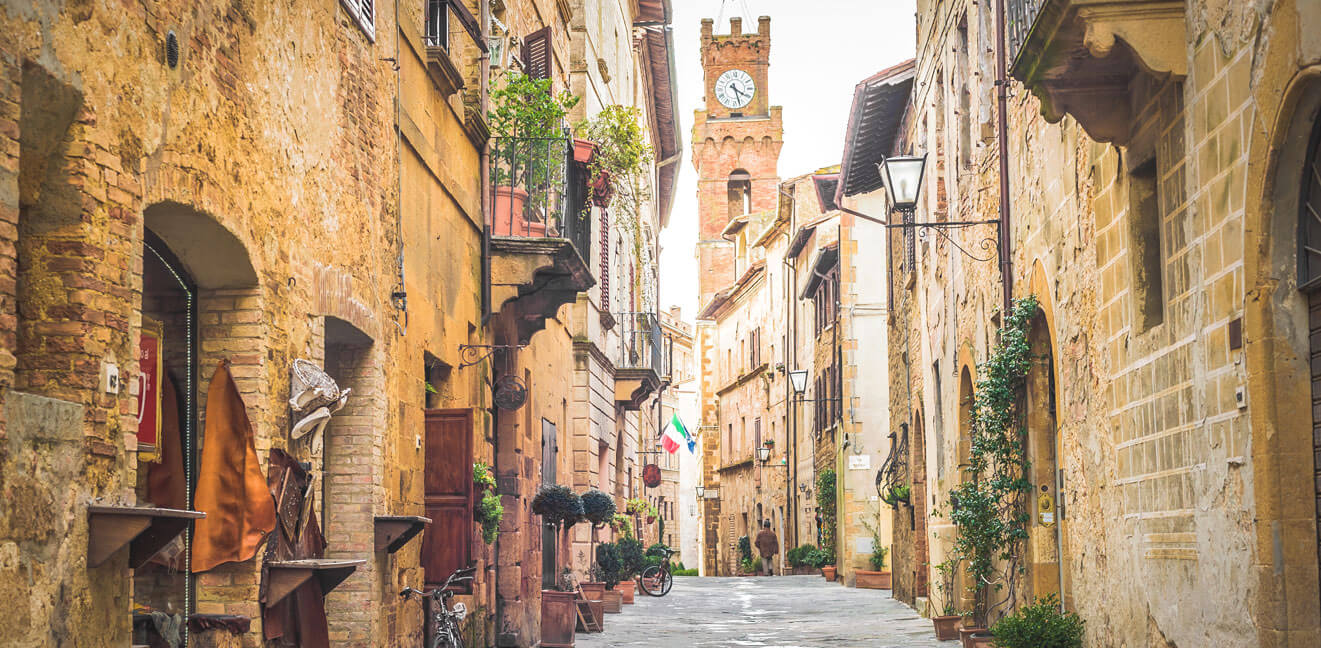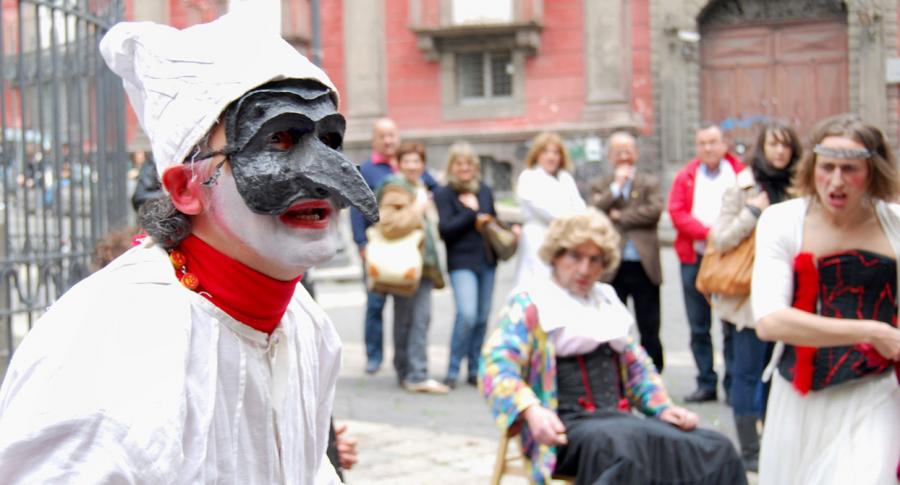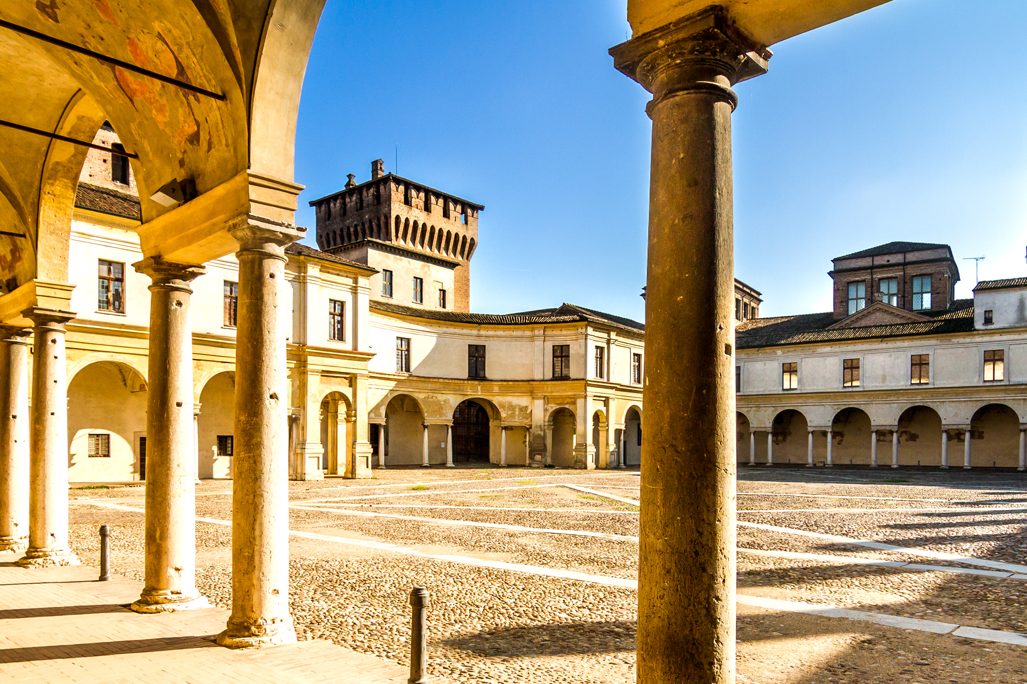Imagine you have all the money in the world. Imagine you have all the space you want. Imagine you have the power to build anything you want, anywhere you want. No expenses, no permits, no regulations, except for your own sense of beauty and harmony. Well, this happened to a certain Enea Silvio Piccolomini, who lived in the 15th century and who is remembered in history as “Pius II, the humanist pope.”
Pope Pius II was born in 1405 of a noble but impoverished family in the tiny village of Corsignano, in the province of Siena, in Tuscany. Many years later, after a scholarly, adventurous, amorous, diplomatic and most interesting life, replete with peregrinations spanning all over Europe, Enea Silvio became pope. Pope Pius II. He then decided to reward his native village. Humble Corsignano was razed to the ground, to make room for the ideal city that Pius II envisaged. And he called it after himself, PIENZA: the city of Pius. Pienza is recognized today as the perfect symbol of Renaissance urbanism, since its perfect harmony exemplifies the principles of classical times and of humanistic philosophy. In 1996 UNESCO declared Pienza a World Heritage Site; later, the whole valley that contains it was also declared part of UNESCO’s World Cultural Landscapes. UNESCO’s recognition started a boom in tourism to the area.
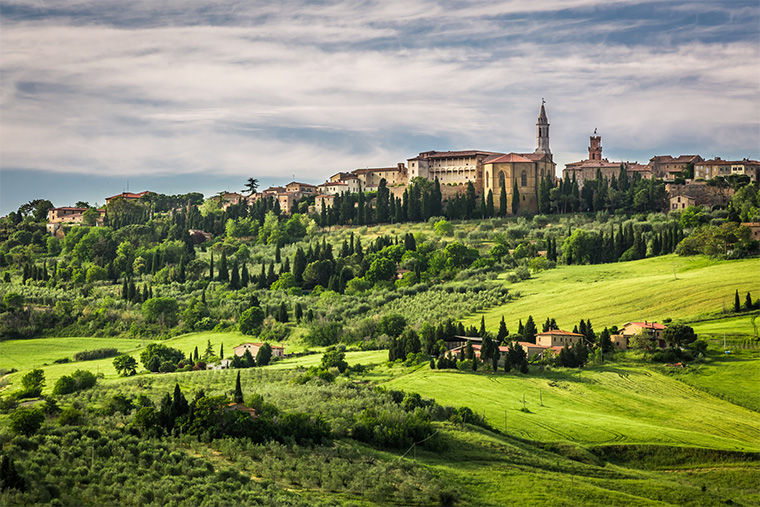
Pienza is a unique example of Renaissance civil urbanism, one of the best-planned towns in the world from the point of view of life-style and governance. It rises high on a ridge, in a strategic position, in the middle of the tranquil, undulating valley of the Val d’Orcia (the valley of the Orcia River), one of the most beautiful landscapes you will ever see. This valley, dotted by the tall cypress trees typical of Tuscany, appears to be almost untouched by time. Pienza and its buildings have also remained untouched, and today they still embody the perfect example of the Renaissance concept of the ideal way of life.
Enea Silvio Piccolomini walked a tortuous walk to the papacy. He did not initially intend to dedicate himself to the church. He was a scholar, a humanist, and one of the best Renaissance Latin writers and poets. He authored a plethora of great works that still exist today. He worked as a lawyer, and then as a diplomat, an occupation that took him all over Europe and that involved him in the thorniest issues of the religious and political life of his times. Not only was he a prolific writer, he was also prolific in other ways: he sired several illegitimate children. He was not immune to the power of love, and wrote openly and movingly about it. A brilliant man, endowed with a winning manner, he ended up in the diplomatic career. He lived in chaotic times for the Catholic Church, times of fights between Pope and Council, and of bitter antagonism between a Pope and an Antipope.
Enea Silvio lived and worked in Switzerland at the time of the Council of Basel (1431- 1439). In 1435 he was sent on secret mission to Scotland. He hated it because of the cold weather, that damaged his health permanently. In Basel, Enea Silvio sided with the Council against the pope. He was still a layman then. He then passed to the court of the Holy Roman Emperor Frederick III in Vienna, and there was crowned poet laureate. At this time he authored the romantic and erotic Tale of Two Lovers, written in Latin, which may have reflected the true story of the love of his life. Many were the travels, the missions and the vicissitudes he experienced. Enea Silvio showed how cleverly he was able to mediate and pacify when he led opposing parties to reconciliation. He took finally orders in 1447, and Pope Nicholas V made him Bishop of Trieste and then of Siena: thus he came around full circle to his native soil with great honors. In 1455 Enea Silvio arrived in Rome to offer the Emperor of Germany’s obedience to the newly elected pope, Calixtus III, who died in 1458. Soon Enea Silvio himself was elected pope and took the name of Pius II, because his family claimed its origin from the “pious Aeneas” of the Aeneid.
Once elected pope, Pius II transferred his passion for women and power to the welfare of the church. He immediately showed an interest in launching a new crusade. The Turks were inexorably advancing. In September 1459, when he was in ill health, he called for a crusade. He was burning to participate in person to the fight, but he was also burning with fever. When he arrived at the Adriatic port of Ancona, from where the crusaders were due to embark, very little of the expected fleet had arrived; he could only see a few ships from the window. He died on August 14, 1464, without ever setting foot on a ship, while the planned crusade dissolved.
Before this last great crusading burst of energy, Pius II had decided to make his native place special. He had employed an architect who understood his desire to build an ideal city. Pienza. This man was Bernardo Gambardella, nicknamed Rossellino (he probably had red hair). Rossellino was greatly influenced by the great architect Leon Battista Alberti. Rossellino was given the task to create a piazza, which is interestingly in the shape of a trapeze, and to build a Cathedral, a Papal Palace and a Town Hall, as well as all the other buildings, including houses for regular people, needed to form a whole harmonious and livable town.
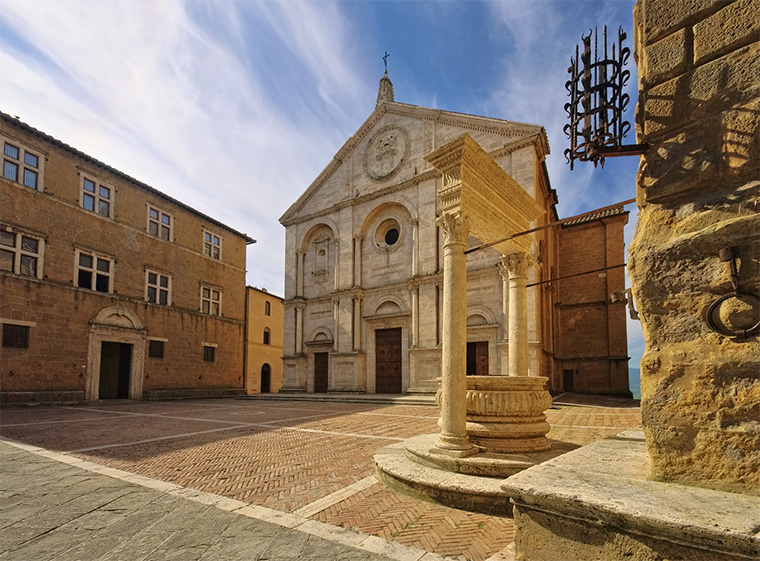
The project was finished in just three years. The Cathedral is situated in Piazza Pius II, of course. The Pope especially requested that the stained glass windows be especially large, so that the house of the Lord would be literally a domus vitrea, a house of glass that would symbolize the light of the Humanist age. Four buildings enclose the piazza: the Palazzo Piccolomini, that is, the papal palace, meant to be a retreat from Rome; the Cathedral, which dominates the piazza with its tripartite shape, enhanced by pilasters and columns, uncommon in those days. The bell tower has a Gothic flavor reminiscent of the time Pius II had lived in Germany. The Bishop’s Palace was designed to house prelates who came to visit the Pope. It now houses a Museum. Across the Cathedral stands the Palazzo Comunale. All the buildings were built with travertine, the noble stone the ancient Romans loved to use.
Since I first visited Pienza when I was a teenager, what was then a little sleepy town has greatly developed: numerous hotels, restaurants, cafes, shops and boutiques have sprung up for the numerous tourists. But the town retains the same feeling of perfect harmony that Pius II had desired. The old abbey has become a magnificent hotel. The landscape, the people, the historical background, and finally the excellent wines (the fabulous Brunello di Montalcino and the historical Montepulciano) attract crowds of tourists. In fact, apart from the magnificent architecture, Pienza is good to visit because of its tasty cuisine in the Tuscan style. The Pecorino cheese of Pienza is especially famous, and the town honors it in the Saga del Cacio, The Feast of the Cheese, during which children compete in a “torneo” rolling balls of cheese. The numerous restaurants offer the best of Tuscan cuisine, accompanied by the best of Tuscan wines. And in every street, at every corner, the stones remind you of the old pope.
